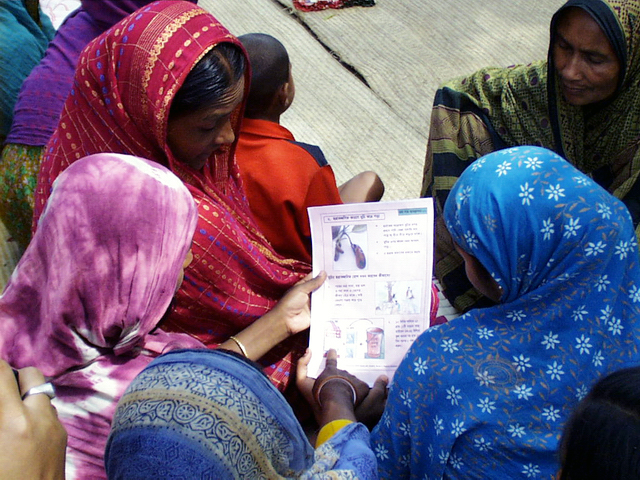« back
 Participatory Poverty Assessments
Participatory Poverty Assessments
What are PPAs?
Governments and their development partners around the world are involved in formulating and implementing a range of poverty reduction policies. The aim of Participatory Poverty Assessments (PPAs) is to integrate the views of people living in poverty into this process.
How did PPAs emerge?
PPAs became popular in the 1990s and their emergence was closely related to the poverty reduction agenda of the World Bank. The first generation PPAs demonstrated the potential of the approach to produce different information about poverty and new insights about its nature and dynamics. The emphasis in this round of PPAs was on better information for better policies.
The second generation of PPAs showed how PPA processes could create new relationships between actors involved in poverty reduction. They emphasised the importance of policy influence by civil society organisations (CSOs) and poor people, and amplified calls for more national control of poverty reduction strategies.
Why are PPAs relevant?
Over time, three cases for the use of PPAs became apparent:
- Poor people have the right to participate in the design of policies targeting them.
- PPAs generate new insights about poverty.
- PPA processes open spaces for poor people to influence policy.
In many cases, the process of carrying out a PPA has built new relationships between government, aid actors, CSOs and ordinary people. PPAs are not only used to design appropriate policies, but can also help in implementing and monitoring them, providing a baseline for follow-up studies. Overall, there is solid evidence that an integration of poor people into poverty reduction measures increases policy effectiveness while a lack of integration likely leads to failure of poverty reduction policies.
Further Information
Deepening the Understanding of Poverty: Second Participatory Poverty Assessment Report
The Uganda Participatory Poverty Assessment Process was an initiative of the Ministry of Finance, Planning and Economic Development. A first participatory poverty assessment (PPA1) was carried out in 1998/99 in 36 research sites in nine districts. Its findings were used to inform policymaking. This book details the second PPA (PPA2), with two main aims: to deepen the understanding of poverty and poverty trends gained in the first PPA; and to investigate people's experiences with selected government policies. The research was undertaken by seven partner organisations working with local researchers, and the overall coordinating and implementing agency was Oxfam GB. The book includes sections on: the Uganda participatory poverty assessment process; poverty, vulnerability and poverty trends; livelihoods and the plan for the modernisation of agriculture; environment and poverty; health and poverty; water and sanitation; education; taxation; and good governance and poverty reduction.
 Download link http://www.participatorymethods.org/resource/deepening-understanding-poverty-second-participatory-poverty-assessment-report
Download link http://www.participatorymethods.org/resource/deepening-understanding-poverty-second-participatory-poverty-assessment-report
Can the Poor Influence Policy? Participatory Poverty Assessments in the Developing World
Caroline Robb, World Bank (2002)
The importance of including the poor coincides with a commonly held belief today that widespread poverty in the midst of global prosperity is both unsustainable and morally unacceptable. Updated from the 1999 edition, this book reflects the shift in dialogue from why the poor should be included in policy formulation to explanations of the way this can be achieved. Drawing on her experience as a social development specialists, the author shows how participatory methods and approaches can enable poor people to analyse their poverty, suggest solutions and express their priorities, and how these can fundamentally differ from those assumed by policymakers.
 Download link: https://openknowledge.worldbank.org/handle/10986/13953
Download link: https://openknowledge.worldbank.org/handle/10986/13953
